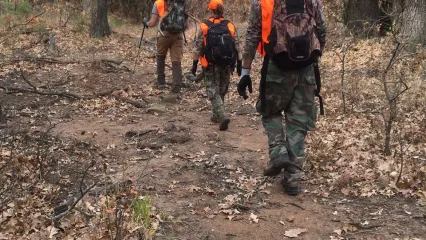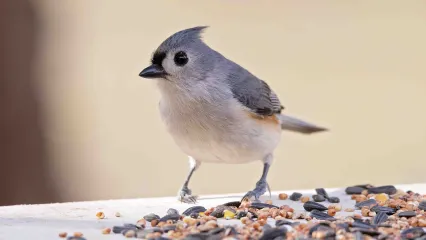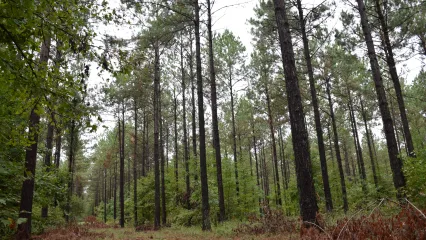Attention Non-Residents
The Oklahoma Wildlife Conservation Commission adopted new rules in 2025 that require non-residents accessing certain Oklahoma public hunting and fishing areas to check in and out of the area. By checking in and out of these areas, hunters, anglers, shooters, birdwatchers, hikers and any other users can help the Wildlife Department better understand how the area is being used. There is no additional cost associated with checking in or out of an area. There is no limit to the number of check ins for an individual in a year.

Contacts
Area Details
Robbers Cave WMA - Portion A covers 610 acres of Latimer County in Southeast Oklahoma. It is one of two portions, the other being Portion B (5,570 acres). The area is located on Highway 2 north of Wilburton. The area is adjacent to the Robbers Cave State Park.
The area consists mostly of hills covered with pine timber, with scattered oaks and hickory and very few openings.
From Wilburton: 5 miles north on State Hwy 2, with areas located on both the east and west sides of the highway. The 2 primary entrances into the WMA are located just north of the Robbers Cave State Park and are marked with WMA signs.
- Deer: White-tailed deer are present in fair numbers but are highly sought after.
- Turkey: Eastern wild turkeys are present in good numbers but are highly sought after.
- Rabbit: Cottontails are present in good numbers.
- Squirrel: Gray and fox squirrel are present in good numbers.
- Furbearers: Coyote, bobcat and raccoon are available.
Proper management of the many natural gas pipelines provides the needed openings in the pine timber.
Camping is allowed in designated areas only on the area. Camping facilities ranging from primitive camping to cabins or a lodge are offered at Robbers Cave State Park (1-800-654-8240).
Limited fishing opportunities exist on the management area. Fishing opportunities located on the adjacent Robbers Cave State Park include several clear water lakes and streams. One of Oklahoma’s popular winter time trout fisheries is located below Lake Carlton.
That portion lying east and south of S.H. 2 and Coon Creek Road.
Closed Seasons
Same As Statewide Seasons
Seasons w/ Special Restrictions
- Deer Gun
Open the first nine days only.
- Quail, Snipe, Woodcock, Rabbit, Squirrel, Pursuit with Hounds for Furbearers, Duck, Merganser and Coot
Closed during the first nine days of deer gun season.
- Turkey Spring, Youth Turkey Spring
One-tom limit; seasons combined.
Hunter and angler camping is allowed in designated areas only during open deer and turkey seasons.
Apprentice Designation: A Learner's Permit for Hunting
Hunter education has greatly reduced hunting accidents, but if you can’t complete a course right away, the apprentice designation allows you to hunt under supervision. It works like a learner’s permit, giving you the chance to gain real experience safely until you finish hunter education.
Exploring the New Herron Family WMA
The new Herron Family WMA is more than 17,000 acres of hunting land, it is also adventure, access, conservation, and tradition. Thanks to a unique partnership, Oklahoma residents now have a new place to chase deer, call turkeys, hear quail, and pass on the outdoors to the next generation.



